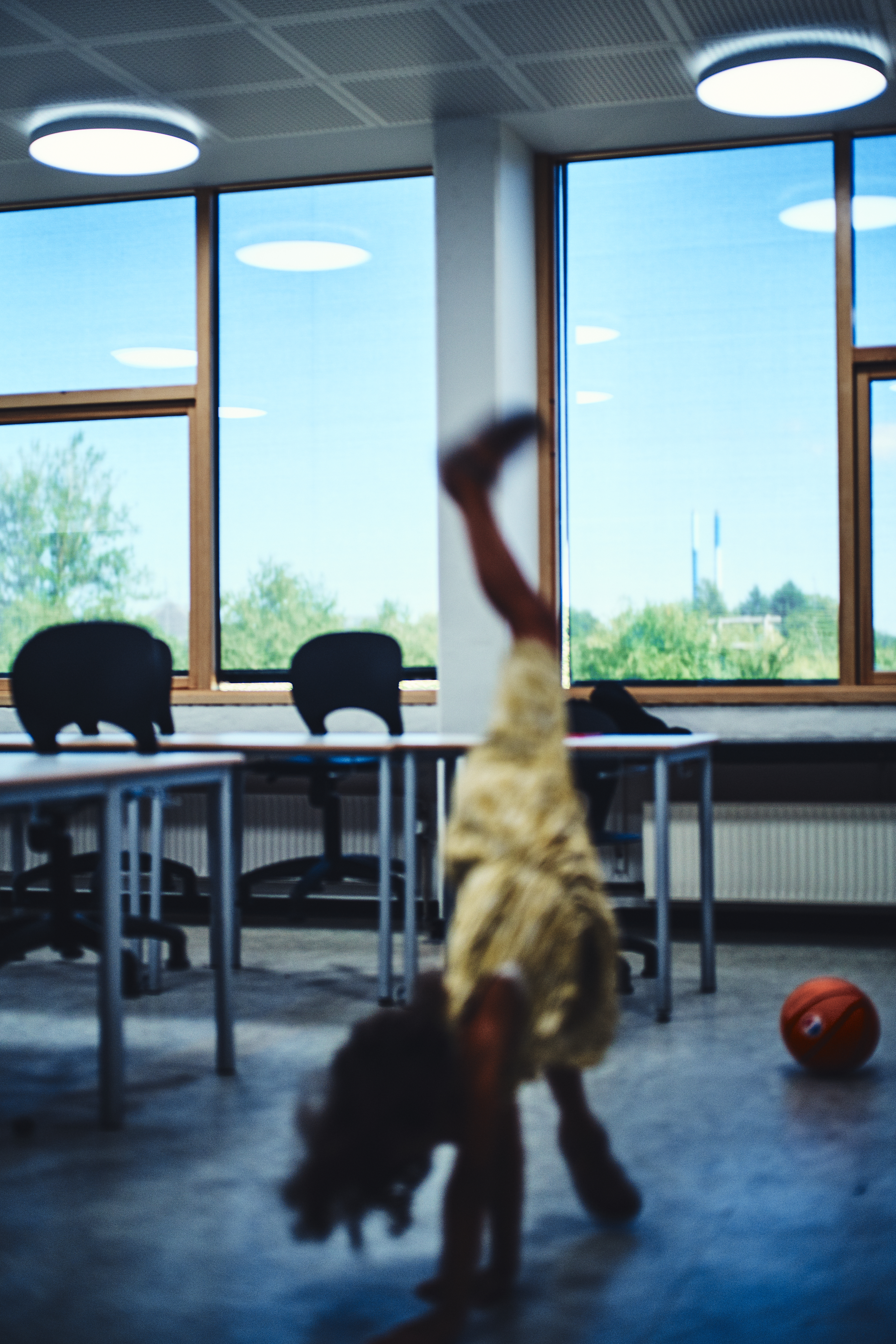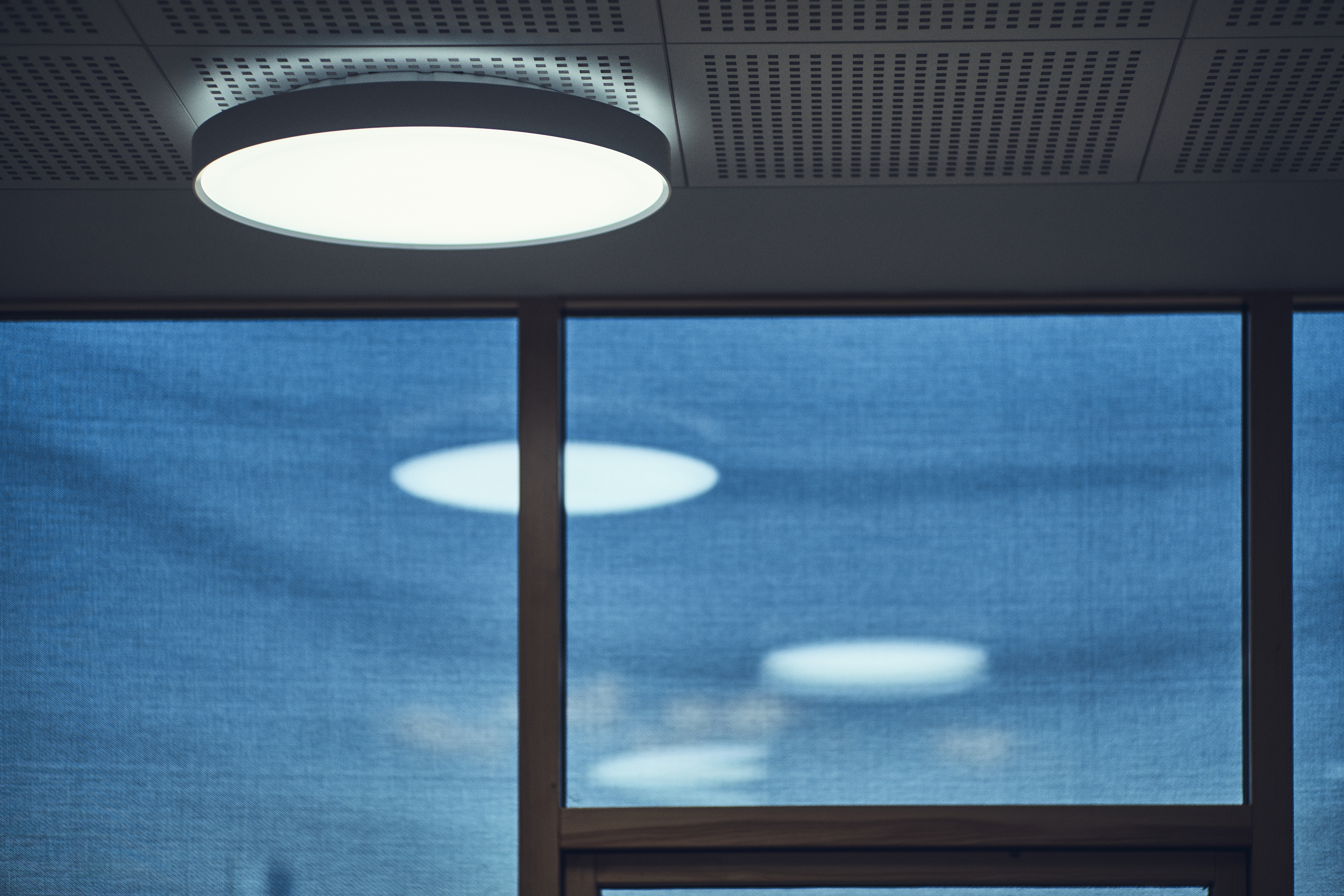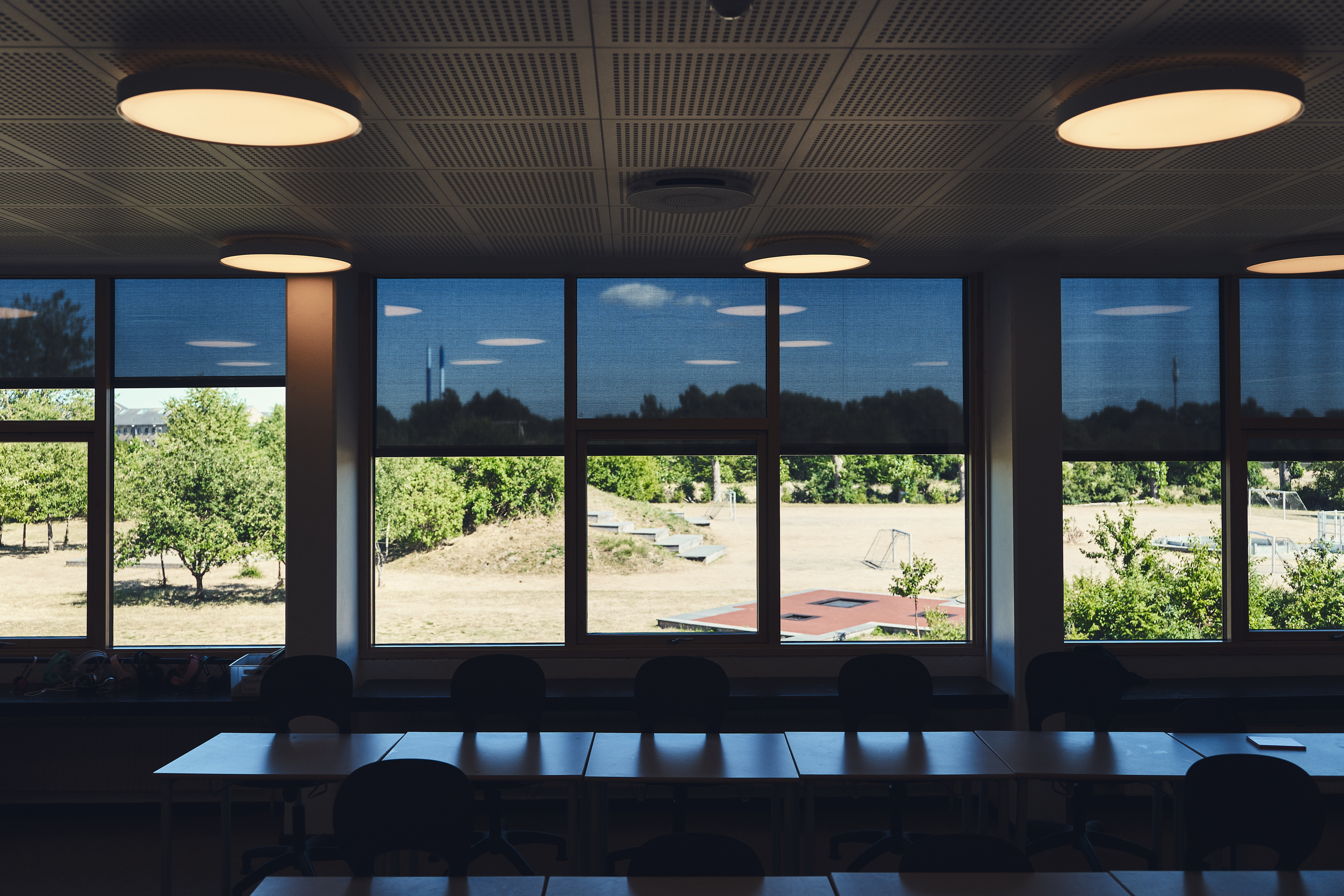Albertslund tests if new lighting designs can improve concentration and the ability to learn.
What was the purpose of the project?
To create evidence-based and useful knowledge about how light in classrooms can support a good learning environment and reduce the use of energy.
Chosen solution
Four classrooms were renovated. Two classrooms facing east and two classrooms facing west. In the four classrooms new light was installed, acoustics were improved and adjustable external shading curtains were placed on the windows facing east. The lighting design consists of three elements: dynamic lights in the ceiling which can change intensity and colour temperature, lighting of the boards next to the smartboard and wall-wash light on the wall opposite the windows. Predefined settings were made.
0: Standard. – Light according to existing regulation (300 lux, 3000 kelvin).
1: Smartboard. – For teaching at smartboards. (300 lux, 3500 kelvin)
In the room there is a neutral white light (300 lux, 3500 K), while the light in front of the smartboard is turned off. The light that lights up the boards next to the smartboard is slightly warmer (300 lux/3000 K) than the light in the ceiling. The wall-wash light on the walls opposite the windows is cooler (300 lux, 4000 K)
Ceiling lights: (300 lux, 3500 K)
Lights in front of the smartboard: Turned off
Lighting of the boards: (300 lux/3000 K)
Wall-wash light on the wall opposite the windows: (300 lux, 4000 K)
2: Fresh/focus. – For focus on the teacher and concentration in the room.
In the room the light is intense and cool (500 lux, 5000 K) and the light in front of the smartboard is dimmed. The light that lights up the boards next to the smartboard and the teacher is slightly warmer (500 lux, 3000 K) and so is the wall-wash light (500 lux, 3000 K) on the walls opposite the windows.
Ceiling lights: (500 lux, 5000 kelvin)
Lights in front of the smartboard: dimmed
Lighting of the boards: (500 lux, 3000 K)
wall-wash light on the wall opposite the windows: (500 lux, 3000 K)
3: Calm/Relaxed. – for a room focusing on the pupils and a cosy atmosphere. (100 lux, 3000 kelvin)
There is a warm light (100 lux, 3000 K) in the room and at the smartboard. The light next to the smartboard is dimmed (50 lux, 3000 K) and so is the wall-wash light (75 lux, 4000 K) on the walls opposite the windows
Ceiling lights: (100 lux, 3000 K)
Lighting of the boards: (50 lux, 3000 K)
wall-wash light on the wall opposite the windows: (75 lux, 4000 K)
It is up to the teachers to use these three settings to create different moods to support the various learning situations in the classroom. In two classrooms (one facing east and one facing west) there is a timer on each stetting, changing it back to the standard setting after 30 minutes. In the two other classrooms it is up to the teachers how long they use each setting.
Mixed methods were applied. Both an anthropological approach with observations and interviews and a technical approach with measurements of reflectance of materials, noise, daylight level and simulation of direct sun to choose shading solutions.
We measured and observed the existing situation, which resulted in design parameters. A lighting designer interpreted the design parameters into a specific design. The design was applied to the classrooms, and the new situation was evaluated with the same mixed methods.
Collaborating partners
Research: Lighting Design, AAU Copenhagen
Concept development: SWECO
Manufacturing: Zumtobel Group
Technical specifications
Ceiling luminaires: Zumtobel , Ondaria 590 TW 930-960 surface mount
Downlights: Zumtobel , Panos Inf. R150 WW CRI 90 4000K
Whiteboard luminaires: Zumtobel , Slotlight inf. WW. 4000K
Lightcontrol: Zumtobel, Litecom
Measurable effects
The teachers’ use of the lighting scenario was studied through a mixed-method approach, combining qualitative research material from observations and interviews, and quantitative data from the dynamic lighting design.
The results show that the teachers used the different scenarios and that they created individual patterns for interaction with lighting as a tool for teaching. The parameters were related both to the time-dependent variation of daylighting conditions referring to seasons, time of the day and orientation of the classroom as well as to different teaching and learning activities in classrooms. Both aspects should be considered when designing interactive lighting systems for learning environments, thus creating an engaging tool for teachers.
Five motivations for use of light as a tool in teaching:
- Supporting and structuring activities
- Communicating with lighting and involving students
- Affecting the students’ activity level and behaviour
- Creating atmospheres
- Supporting visual tasks and visual comfort
Lessons learnt?
The triple helix collaboration was very successful, since it gave us the possibility to make a real case study and collect a large amount of qualitative and quantitative data. The analysis of this data has been very time consuming and there is still a lot of valuable data to be analysed and used. Next time we would allocate more time for analysis and writing scientific papers.
Date of opening: Spring of 2018
Visiting info
After arrangement with the municipality, se contact details below.
Publications
43 scientific peer reviewed papers and one poster has been submitted:
Pihlajaniemi H., Sen, S., Schledermann K. M., Hansen, E.K.,: Choosing right light for learning – effect of season, time of day and class room orientation [work in progress]
Schledermann K. M., Pihlajanieni H., Sen S., Hansen, E. K.: Dynamic Lighting in Classrooms: A new interactive tool for teaching. EAI International Conference on Design, Learning & Innovation, October 2018, Braga, Portugal
Hansen, E.K., Nielsen, S. M. L., Georgieva D., Schledermann K. M, Mullins, M. F.: Dynamic Lighting in Classrooms, A mixed method approach combining light, behavior and noise, Digital Poster presentation, PLDC 2017, Professional Lighting Designers Convention, November 2017, Paris
Hansen, E. K., Nielsen, S. M. L., Georgieva D., Schledermann K. M.: The Impact of Dynamic Lighting in Classrooms. A Review on Methods, EAI International Conference on Design, Learning & Innovation, October 2017, Heraklion, Greece
Georgieva D., Schledermann K. M., Nielsen, S. M. L., Hansen, E.K.: Designing User Centred Intelligent Classroom Lighting, EAI International Conference on Design, Learning & Innovation, October 2017, Heraklion, Greece
The unique contribution of this paper is that all the data collected from the final design case study during the previous 6 months, as well as the analysis and findings, are new, so this paper contributes with the absolute main findings of the overall project.
MSc master theses at Lighting Design AAU:
Georgieva, D. and Schledermann, K. M. 2017. User Involvement in the Process of Developing Intelligent Classroom Lighting. Master thesis, Aalborg University Copenhagen
The future
The approach, to study how dynamic lighting can be used as a tool for teachers, will be scaled up in other projects and studied in other kinds of buildings.
Contact info
Email: mt@albertslund.dk

Classroom at Herstedlund school, where dynamic lighting has been implemented

The three pre-programmed lighting scenarios.



The control panel for hte lighting scenarios.



